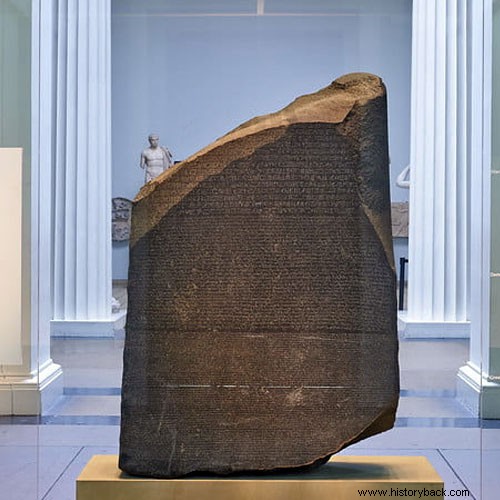Jean François Champollion called Champollion the Younger ( 1790-1832 ), was a French archaeologist and Egyptologist.
He said of himself:" I am all of Egypt and Egypt is everything to me ". He became famous for deciphering the Rosetta Stone , a slab of dark granite (often identified as basalt) of 114 x 72 cm , which weighs about 760 kg and has an inscription with three different spellings : hieroglyph , demotic and Greek (from the top to bottom). Champollion he knew nine ancient languages perfectly (Latin, Greek, Hebrew, Arabic, Syriac, Chaldean, Coptic, Persian and Sanskrit) and, through careful comparisons with other texts, was able to decipher the hieroglyphs in 1822 .

The history of the stele is linked to Napoleon Bonaparte and shipping to Egypt designed to strike British dominance in the Mediterranean Sea and make your way to the Indies . The expedition departed from Toulon on May 17 of 1798 . The discovery of the stele is attributed to the French captain Pierre - François Bouchard who found it in the port city of Rosetta (today's Rashid ) in the Nile delta on 15 July of 1799 , while digging a trench.
In reality, it was a soldier, whose identity we do not know, who found it during the works. Bouchard he understood the importance of the stele and so he showed it to the general De Menou , who decided to take it to Alexandria in August of the same year.
The stele, since 1802 , due to a war between the French and the English, is exhibited at the British Museum . In 1988 underwent cleaning operations and in July 2003 the Egyptians have requested the return of the work, but currently in Cairo there is a copy.
